Jill Derryberry

Recent Posts
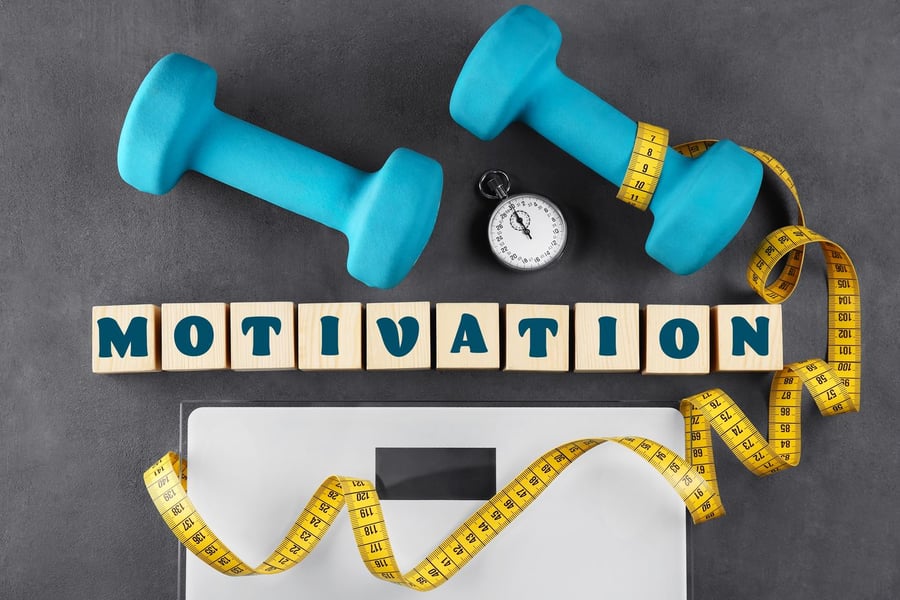
I like to exercise. I like it so much I made it my full time job! So it may surprise you to know that there are days when I just don’t feel like working out. At all. Really.
It is completely normal to have times when the thought of going to the gym or lacing up those sneakers for a walk or run sounds horrible even if you normally like your fitness routine.
Maybe you didn’t get enough sleep the night before, are not feeling well or you are overwhelmed with life but you just don’t feel the energy to muster up a workout.
There are also those who never feel motivated to exercise. They just don’t like it! I have met with many individuals who always have to push themselves to get a workout in or maybe they don’t workout at all.
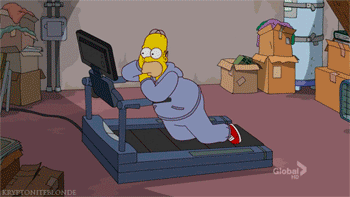
Love it or hate it, the benefits of exercise outweigh the negative so we all should include it as part of our lifestyle. Whichever group you fall in, you are never always going to be motivated. Zig Ziglar is credited with saying, “People often say that motivation doesn’t last. Well, neither does bathing – that’s why we recommend it daily.” Motivation is fleeting, it isn’t a permanent situation.
You have to continue to motivate yourself as often as necessary and become disciplined. Mario Andretti said, “Desire is the key to motivation, but it’s determination and commitment to an unrelenting pursuit of your goal – a commitment to excellence – that will enable you to attain the success you seek.”
Zig Ziglar also said, “It was character that got us out of bed, commitment that moved us into action, and discipline that enables us to follow through.” Exercise is an important part of a healthy life.
How can we get motivated to do it? Then how do we turn that initial motivation into determination, discipline and commitment?
Find Your Why
The Merriam-Webster definition of motivated is “provided with a motive : having an incentive or a strong desire to do well or succeed in some pursuit”. Think about your motive for exercising.
Why do you want to work out? Many health conditions are improved or prevented by exercising and eating a healthy diet. Your why might be to lower your A1C number and not develop diabetes.
Someone else might have high blood pressure and is looking to lower it through lifestyle changes. Others may want to lose weight to stay healthy to live a long life with their kids and grandkids.
Whatever your why, or motive for exercising, write it down where you can see it whenever you need some motivation. I have heard of many people writing their why on a post-it note and putting it on the mirror in their bathroom so they see it first thing every morning. Put it where you will see it when you need a reminder of why you are keeping exercise in your schedule.
Create Small Goals and Track Your Progress
Develop a few goals you can work on short term. Even if you have a larger goal, identify some milestones to be reached along the way. Maybe your first goal is to exercise three days a week. Keep track of your workouts to ensure you will meet your goal.
Another goal could be to do a push up on your toes or do a pull up. Working toward a goal can be a motivator to keep up with your workouts. Make sure you track your progress, either on paper or in an app. According to Thomas S. Monson, “That which is measured, improves”. Seeing improvements makes you want to keep going.
Get An Accountability Partner or Group
Find people who will support you and keep you on track. It could be friends, coworkers, family or an online accountability group. Many health and fitness apps have the ability to chat with others with similar goals and might be a good place to find someone to push you to stick with your workouts. Keep it positive. Find a pal that supports and encourages but doesn’t nag.
Group fitness classes can be fun and motivating. It is inspiring and motivating to be surrounded by dedicated, like-minded individuals plus you will receive support from the instructor and other participants. In many of my classes regular participants get to know each other and expect to see each other at every class. They become accountability partners to come to class and push each other throughout the workout.
Another awesome accountability partner is a personal trainer. Having someone create workouts especially for you, push you through it and will hold you to your appointment for the workout can be very helpful.
Make it Fun
If you are consistently dreading your work out, maybe you haven’t found the right one for you. There are so many ways to exercise. Keep trying out different things until you find something that you don’t hate.
Finding a workout buddy is another way to make working out fun plus getting a built in accountability partner.
If you used to like your routine but it has become a bit stale, switch it up and do something different. Exercising doesn’t have to be at the gym; walking, running, playing sports or dancing are all great ways to workout. Maybe you will never think of it as “fun” but at least you won’t dread it.
Make It A Habit
“Motivation is what gets you started. Habit is what keeps you going.” - Jim Ryun
When motivation wanes, discipline is extremely important. Exercise should be part of everyone’s life. Your why, your motivation can get you started working out but to have the discipline and commitment to keep doing it regularly, it is best to make it a habit.
Creating a new habit can be difficult. Utilizing all of the things already discussed here will help you get that exercise in. Here are a few tips to make it a habit.
Create cues that signal it is time to exercise. Brushing your teeth is a common example of a habit. You don’t even think about it, you just do it. Think about your cue to brush your teeth. What triggers you to do it? Is it when you are in the bathroom right before bed? Create cues for your workout.
Maybe your gym is on the way home from work. The night before when you brush your teeth, put together your gym bag with everything you need for the gym the next day. (Pairing this new habit of getting your gym bag together with your existing habit of teeth brushing might make it easier to remember.)
Put your gym bag next to your work bag or in the car so it goes to work with you in the morning. Then when you drive home from work, you are going straight to the gym. In this example, your cue to exercise is leaving work. Your cue to prepare for the gym by putting your workout clothes and anything else you need for the gym in a bag the night before is brushing your teeth.
Schedule your workouts on a calendar. Plan what you will do and when. Getting your workout in at the same time of day has shown to be beneficial to developing an exercise habit.
Make it an appointment just like a business meeting or doctor visit that you can’t cancel. When people ask you if you can do something at that time you can honestly say you have an appointment and can’t.
Reward yourself. If you are consistent, you will notice a feel good feeling after you are done with your workout due to the endorphins released during exercise. After some time, this could be enough to keep up that exercise habit.
I have said to myself “remember how you will feel when you are done” many times before a workout. You also feel better overall when you are working out regularly, your sleep improves, your mood improves plus more.
It gets to a point when you feel so much better when exercise is a part of your lifestyle that if you stop for a period of time, you can’t wait to get back to it to feel better again.
This is what rewards me and keeps my exercise habit going. However, when you are new to exercise, it may be helpful to create other rewards like putting a dollar for every workout you do and buying yourself new workout clothes with the money you accumulate.
Or only watching your favorite tv show after or during a workout. Someone else might feel a reward would be a long hot bath after the workout. The point is to treat yourself in a healthy way that you wouldn’t otherwise do and will look forward to after that workout.
Exercise is an important part of a healthy lifestyle. Despite knowing the benefits, it isn’t something we are always motivated to do and that is normal. It’s ok to have those days where it is harder than others to get to the gym or get that run or walk done. Even the most disciplined have those days.
Keeping in mind your specific reason for staying healthy (your why) and committing to an exercise habit are helpful in keeping an active and healthy lifestyle and getting the workout done those times it is harder to get started.
Experiment with ways to exercise to find what you like best and don’t be afraid to change it up. Surround yourself with positive people to keep you accountable and you won’t have to look far for exercise motivation. Before you know it you will be committed to your workout routine and have the discipline to stick to it even when motivation does wane.
“Weight loss doesn't begin in the gym with a dumb bell; it starts in your head with a decision.” - Toni Sorenson, The Great Brain Cleanse
Looking for some exercise moves to help get you started? Take a look at our workout library to find exercises and video instructions.
Exercising At Every Age: Does Your Age Determine Your Workout?
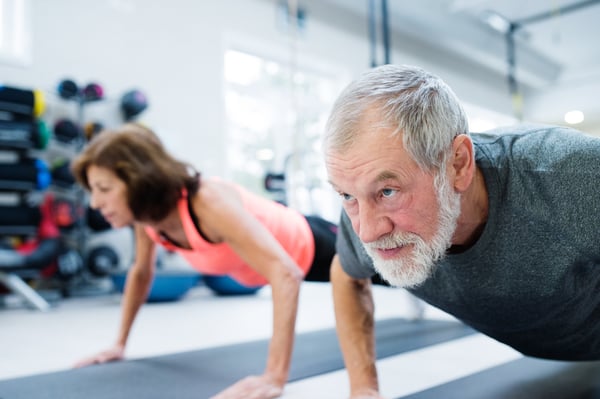
The very day after I turned 40, I started to see articles everywhere like “Exercises to Never Do After 40” and “Top Ways to Build Muscle After 40” or “What is The Best Workout For Women Over 40?”. I received emails, saw ads on websites and spotted magazine articles all with the big 4-0 in the title.
How the internet knows how to specifically target you based on your age is a very scary thing that could be the subject for another type of blog post, but we will just focus on the fitness aspect of this type of information here.
Kidding aside, we are bombarded with these messages that once we are past a certain age we can no longer do particular workouts or exercises. The things I was doing in my workout the day before at 39, I shouldn’t do the next day because I’m 40 (gasp)? Should someone who is 60 or 70 not start exercising? Are the exercises appropriate for a 20 year old not right for someone who is 65? Does age really matter?
Your Body As You Age
I’ve met with someone who is in great shape at 81 and can hold a 7-minute plank (no lie). I’ve also met with someone who at age 32 cannot hold a 10-second plank (also true).
Age is not necessarily a factor when it comes to fitness level. Everybody’s body and lifestyle are different which affects the type of workouts that are most appropriate for you. Age doesn’t matter as much as your particular stage of fitness and health.
That being said, there are some changes that your body goes through as you get older that can affect the workout that is best for you, but also makes exercise even more important than when you were in your 20s and 30s.
Bone mass peaks around age 30. Bone resorption begins to exceed new bone formation in your 30s and slowly leads to bone loss. Osteoporosis is a disease characterized by low bone mass and is a leading cause of bone fractures in women over the age of 50 (National Institute of Health for Osteoporosis and Related Bone Diseases National Resource Center, 2015).
Though osteoporosis is not typically diagnosed until later in life, the bone loss process starts earlier. Strength training and weight bearing activities will help offset this bone loss and strengthen bones. Women especially suffer from bone loss. Strength training, either with body weight or weights, is beneficial to do at any age. But to specifically help prevent osteoporosis, it is best to start in your 20s and 30s.
Beginning in your 30s, your natural muscle mass and strength will start to decline (unless you do something about it!). The less muscle you have, the lower your metabolism, which may cause weight gain.
It also can contribute to joint pain, back pain, as well as other physical ailments. However, this does not have to happen.
An exercise routine with strength and resistance training beginning in your 20s and 30s can combat the extent of any muscle loss. Are you in your 40s or beyond and have never had a workout routine with any type of weight training?
Don’t worry, incorporating any weight training and weight bearing activities at any age can help to maintain your muscles.
In our 40s, both men and women start to experience dropping hormone levels.
This makes it easier to gain weight, especially the most dangerous type of fat around our middle, visceral fat.
This type of weight increases the risk of other health conditions such as; high blood pressure, diabetes and heart disease.
This can happen at any age, however, it is more likely a little later in life due to the changes in our hormones.
A consistent exercise routine and a healthy diet can fight all of these changes.
Balance becomes more challenging and reaction time slows as we age which contributes to falls.
The Center of Disease Control and Prevention reported that one out of four people over the age of 65 experience a fall each year. Combined with bone loss, this results in many broken hips and other bones.
Balance training should be a part of all exercise routines for anyone, especially those over the age of 65, to reduce the risk of falls.
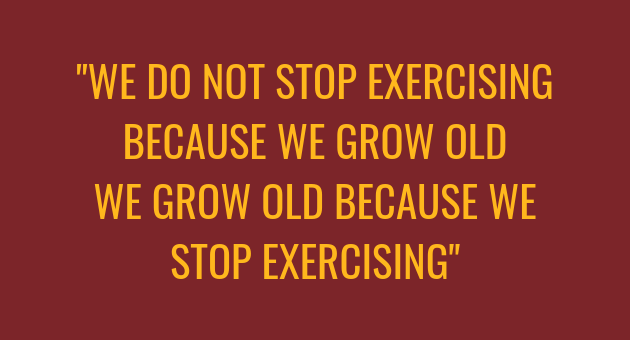
This is not a comprehensive list of the things our bodies go through as we age, but highlights some of the most prevalent changes and those that can be improved or prevented by exercise.
Certainly our bodies start to wear with use, which may result in more aches and pains and make exercise feel more difficult.
But that is more reason to keep moving! Kenneth Cooper, MD is attributed as saying, “We do not stop exercising because we grow old – we grow old because we stop exercising…”.
Benefits of Exercise When You Are Older
Some think that it is too late to start exercising at a certain point because physical decline as you age is inevitable or they feel they are too out of shape, are in too much pain or just plain too old to exercise.
That couldn’t be farther from the truth. Physical activity will be good for anyone at any age or fitness level. Exercise can help make you stronger, prevent bone loss, improve balance and coordination, lift your mood, boost your memory, and ease the symptoms of many chronic conditions. Many symptoms we associate with old age, such as muscle weakness and loss of balance, are made worse by inactivity.
It’s never too late to start. Improvements to one’s physical health can be made at any age. Studies have shown that people in their 90s who started an exercise routine for the first time built muscle strength.
Other research shows that starting exercising later in life still cuts the risk of health problems and improves symptoms of any ongoing issues.
What if you have never worked out before? Starting a new workout routine should be entered into slowly and with consideration. Ease into it and build from there to help avoid potential injuries. This is true for any age!
Should Your Workout Change As You Age?
I mentioned I started seeing articles about exercising for those over 40 the very day after my 40th birthday. One specifically was about the exercises you shouldn’t do after that age.
Should you not do certain exercises after a certain age? Not necessarily. Fitness level and any injuries you may have are more important than age when it comes to exercise selection.
For example, high impact moves (like those that involve jumping) should be avoided by anyone with knee replacements or certain knee injuries. A 25 year old could have knee injuries and a 70 year old might as well.
Both persons should avoid the high impact exercises and modify to the low impact version.
As you get older, your body does have a bit more wear and tear. You may notice you don’t bounce back as easily from a tough workout or injury as you may have done in your 20s or 30s.
You may start to experience more aches and pains. A proper warm up prior to exercising and a good stretching routine is always beneficial for anyone, but is even more important as we age.
Also, in your 40s and beyond you should be even more considerate about your form and any previous injuries.
A recent New York Times article profiled Julia Hawkins, a 103 year old who ran the 50 and 100 meter dash at the National Senior Games this year.
She set the 50 meter dash record when she was 101 after taking up running the year before when she was 100!
Hawkins previously competed in the Senior Games in biking. She only started running when biking became too difficult for her.
Her secret to longevity, “To stay in shape, just keep active”. I love her story and it shows that you don’t have to stop being active at any age.
You may need to adjust your type of workout, but there is always something you can be doing to keep moving.
Working Out with Chronic Conditions
Those with arthritis or other painful conditions may feel they are in too much pain to exercise. It doesn’t seem like it makes sense, but the more you move, the better you will feel.
A study of people over 60 with arthritis in their knee (or knees) found that those who exercised more had less pain and better joint function.
Keeping the muscles and surrounding tissues strong is crucial to maintaining support for your joints and bones. Weak muscles create more stress on your joints.
Any movement, no matter how small, can help. Daily activities such as mowing the lawn, walking the dog or raking leaves make a difference.
Your doctor, physical therapist or personal trainer can recommend particular exercises for your condition. If you are taking a group exercise class, let the instructor know prior to class about your situation. They can provide you with the appropriate version of each exercise.
Bottom line, exercising is important for your health for your entire life. Our bodies do change as we grow older, but exercise is the key to minimize any resulting health conditions or potential illnesses.
There is no magic birthday that is the day for everyone that they have to stop doing one type of workout and must do another, or need to get out a rocking chair and call it a day.
Modify your workout routine based on your fitness level and physical condition, not your age. Make it a priority so you can stay active, independent, healthy and happy for the rest of your life.
Want to lose weight? What’s more important, diet or exercise?
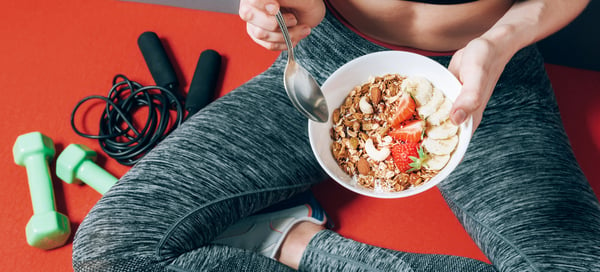
Looking to lose some weight? Should you start exercising or should you change your diet? Can you change the number on the scale with just one or the other or do you have to do both?
I’ve heard from individuals who have lost weight by altering their nutrition and not working out at all.
I’ve also met with people who after starting exercising, slimmed down without changing their eating habits.
I even have spoken with some individuals who made changes to both their diet and exercise routine and didn’t lose anything.
So what should you do?
Weight Loss Basics
Let’s start by reviewing the basics of weight loss. To lose weight you must have a calorie deficit, that is you must be burning more calories each day than you are taking in with food and beverages.
Of course, this simple equation can become very complicated with issues like insulin resistance, unbalanced hormones, lack of sleep and other medical conditions. We won’t get into those situations here.
If you feel you have any medical conditions inhibiting your weight loss, please contact your doctor. However, even without medical reasons making weight loss even more difficult, while a simple equation, creating a calorie deficit and losing weight isn’t easy to do! But it is possible with patience and dedication.
How do you know how many calories you need each day? Your body needs a certain number of calories to maintain your normal bodily functions. That number is your resting metabolic rate (RMR) and it is different for everyone.
There are online calculators to determine your RMR or you can use an app like My Fitness Pal to figure it out for you. The calculator or app will ask you about your activity level.
Your RMR will be multiplied by your activity level; sedentary, lightly active, moderately active or very active. That will give you the number of calories you should be taking in each day.
Subtract 500 calories from that number to give you an updated number of daily calories to put you on track to lose a pound a week.
Studies show it takes a 3,500 calorie deficit in a week to lose a pound, which breaks down to 500 calories a day.
When you have your number of calories to take in each day, keep track of your food and drink intake for at least a few days to ensure you are staying near to your goal. There are many free apps on the market that can help you track your food and can also add in your physical activity.
The calories you burn exercising can be added back to the number of calories you can take in that day and still be on track to lose.
For example, say I should be taking in 1,500 calories daily to lose around a pound a week.
If I run for 30 minutes and burn 200 calories (calorie burn is different for everyone and depends on your height, weight, age, gender and exertion level) then I could eat 1,700 calories that day and still be within my goal for the day.
By making any necessary changes to your nutrition, as well as ensuring you are exercising, you will achieve weight loss faster and in a healthier way. Plus you will be healthier overall!
Here are 5 tips to maximize both diet and exercise for fat loss.
1. HIIT and FIIT
These are important acronyms when it comes to ensuring you are getting the biggest calorie burn from your workouts. HIIT, High Intensity Interval Training, will burn more calories than steady state cardio (like running or walking at the same pace for a period of time).
Plus, with HIIT workouts, your body continues to burn calories hours after your workout as it recovers. This is called excess post-exercise oxygen consumption or EPOC.
EPOC can elevate your RMR up to 38 hours after very high intensity exercise. This number of EPOC boost varies based on the intensity of your workout, your genetics, current fitness level and muscle mass.
Your body will get used to any stimulus you provide it with so what was very difficult a few months ago seems easier now and requires less calories to do. That’s where FIIT comes in.
FIIT stands for frequency, intensity, time and type. By changing either how often you exercise or the number of sets you preform, the intensity of your workout, how long you complete your exercises or how often you work out or the type of your workout, your body will be challenged in a new way and will burn more calories than it would have with your prior workout it was used to.
For example, if you usually do the same five exercises with dumbbells three sets of twelve repetitions, switch to machines that work the same muscle groups or change it to four sets of ten reps with dumbbells.
Change it up! Try a new class, get out your bike, do something different to move your body.
2. Use Weights
More muscle means more calories burned. A pound of muscle burns six calories per day, versus a pound of fat burns which only two calories per day. This increases your RMR and metabolism, which means you will be burning more calories every day even while at rest. A pound of muscle also takes up considerably less space than a pound of fat, so it is not only healthier and burning more calories, it is making you look leaner too.
If you are new to strength training, take a look at our exercise library for instructional videos and instructions.
3. Prioritize Clean Eating
Limit added sugar, focus on lean protein, healthy fats and whole carbs from fruits, vegetables and whole grains.
All calories are not created equal. If you are eating processed foods and other foods with mainly sugar, saturated fats and salt, you will develop consistent cravings and never feel satisfied.
Processed carbs like white flour and foods that are high in sugar or artificial sweeteners will cause your blood sugar to rise sharply but then will crash leaving you hungry again and craving more in an hour or two.
You will feel more satisfied when you are eating lots of foods rich in fiber like legumes (dried beans, lentils), veggies (Brussels sprouts, broccoli, spinach squash, sweet potatoes) and fruit (apples, berries, oranges, pears).
Fiber helps improve blood sugar control, helps lower cholesterol and reduces your risk of chronic diseases like diabetes, colorectal cancer and heart disease as well as keeping you feeling full longer.
Replace processed carbs like white bread, bagels, muffins or donuts for breakfast with high-protein foods like eggs, or Greek yogurt mixed with chia seeds and berries.
For lunch and dinner focus on lean proteins like fish, chicken, turkey, beans, lentils and veggies.
There are many diet trends out there that are not always sustainable and some are not healthy. No gimmicks are necessary if you are eating a well-balanced diet that is within your calorie limits and prioritizes lean proteins, vegetables and whole grains.
If you have questions about a certain diet plan or way of eating, please contact your doctor or a registered dietitian.
4. Watch Liquid Calories
Alcohol, Juice, Coffee Drinks (not just black coffee) can be huge calorie bombs and provide no nutritional value. For example, a Grande Mocha Frappuccino is 410 calories. Imagine your calorie goal for the day is 1,500.
That Frappuccino is over a quarter of your daily intake and doesn’t provide you with much nutritional value. Plus it will probably leave you with a sugar crash in an hour and wanting more. Stick with water, black coffee or unsweetened tea.
5. Make Sure You Are Eating Enough
If you want to lose weight, you may think you need to eat less. Which might be true, but make sure you are eating enough and not starving yourself. Literally.
Extreme calorie restriction can result in amino acids/proteins being used for energy (instead of carbs or fat), meaning muscle loss instead of building lean muscle during a workout.
This would actually reduce your RMR. In other words, slow your metabolism. In general, no one should be consuming less than 1,200 calories per day.
Making sure your nutrition is where it should be is very important to weight loss as well as your overall health. Exercise has many benefits beyond weight loss, but also assists in weight loss by adding to your calorie expenditure.
The key to successful weight loss is a commitment to making lifelong healthy changes in both your diet and exercise habits.
Want a partner in your weight loss journey or don’t know where to start? Schedule a complimentary fitness assessment with a LivRite Personal Trainer to discuss how they can put a plan together for you and work with you to reach your goals!
Topics: LivRite News
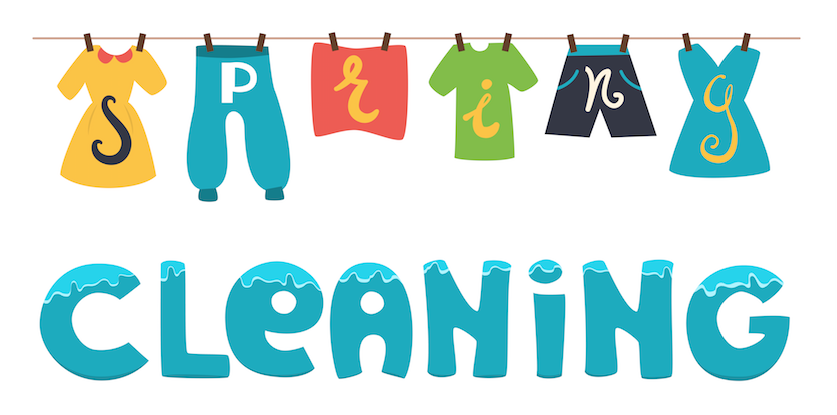
It is finally spring here in the Midwest! The warmer weather, flowers starting to bloom and trees starting to bud can bring about lots of motivation to get moving and start fresh.
Don’t stop at spring cleaning your house, think about a spring clean for your health too!
Whether you kept up your workouts all winter, are still working hard on your resolution to get fit or are just starting out on your fitness journey, now is a great time to refresh your workout regiment.
It doesn’t have to be a complete deep clean, you can make small adjustments that will add up to big benefits.
Make A Schedule
This is especially helpful for those just starting out or getting back into a routine.
Each Sunday look at your calendar and plan your workouts. Be realistic, if you have taken a break from exercise most of the winter, don’t say you will workout an hour six days a week.
Start out with something more like a 30 minute session on three non-consecutive days.
Put your workouts on the calendar along with all of your other important appointments. And don’t cancel those appointments!
Check Your Gear
Spring is a great time to clean out your closet as you are transitioning from a winter to a spring/summer wardrobe.
Don’t forget your workout clothes and shoes! Recycle, reuse or donate any old worn out workout clothes and shoes.
Ladies, don’t forget your sports bras too. A typical bra has a lifespan of about six months depending on how often you wear it.
Running shoes last between 4-6 months depending on how many miles you put on them.
Now might be the time to go into a running store and get fitted for new kicks.
New workout clothes can be motivating and other gear (like your shoes) can help prevent injury.
Change Your Workout
If you have been doing the same workout for months, it might be time to switch it up.
Not only can the same old routine become boring, your body gets used to the stimulus which can prevent you from progressing.
There are many ways to change your training, like the number of sets or reps you perform, changing exercises or even changing your training schedule completely.
Altering the frequency, intensity, time or type of your workout will get your body and muscles challenged again.
Tidy Up Your Thoughts
Instead of creating goals based purely on weight loss, think about how you feel.
If counting calories has become a drag, think about your portion sizes instead. Dreading your workout?
Chances are you need to find a workout you enjoy. Check out different classes or work with a trainer to get new ideas on what type of exercise you will look forward to (or at least not dread!).
Take the opportunity with this new season to look at your workout routine and see if any of these tips will help you get energized about your health and wellness!
If you haven’t already, sign up for a free fitness assessment and talk with a trainer about how to spring clean your workouts and get ready for spring and summer.
Topics: LivRite News
How to engage your core! What does that even mean?
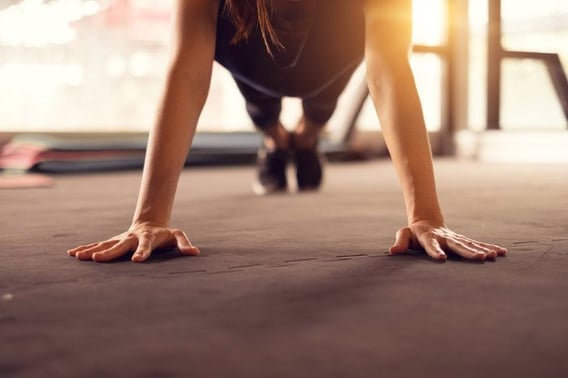
Have you ever heard a trainer or group exercise instructor say “engage your core” or “tighten your abs”? Some might cue you to pull your navel to your spine. These are all ways to remind you to tighten your abdominal muscles while performing certain exercises so you can reap the most benefit from the moves as well as reduce your risk of injury. But how do you do it? What does it even mean?
First, a quick look at what makes up your abdominal muscles (abs) which are a big part of your core. Everyone has four layers of abs. The deepest layer is called the transversus abdominis (TVA). The TVA wraps around your waist to connect the ribcage to the pelvis. On top of the TVA are the internal and external obliques which criss-cross your torso. Last but not least, the top layer is your rectus abdominis which are the muscles that form that often discussed six-pack. When all four of these ab muscles are braced together, working with the muscles that line your spine, you have what is called an engaged core. Keep in mind, your core also includes your glute muscles and adductor muscles in your hips along with your lower back and abs.
Why do you want to engage your core? Engaging your core during your workout helps reduce the risk of injury, especially injuries of the lower back. For example, think about completing shoulder presses. As your shoulders get tired you may start arching your lower back which puts a dangerous strain on your spine and the muscles around it. By zipping up your abs and squeezing your glutes, your spine is more protected and you can move your shoulders through a safer range of motion.
Practice engaging your core while doing my fast ab circuit!
Also, engaging your core when performing abdominal exercises especially, ensures your abs are doing the work instead of recruiting other muscles to take over. This will make those moves more effective. Since your core is the basis of almost every movement we make in our day to day lives, it is important to keep it strong.
So how do you engage your core? Your abs should be tight and pulling in but you should be able to breathe and move normally. It is NOT sucking in your stomach and holding your breath. You can practice engaging your core at any time by feeling your ribs expand to the sides while you inhale, then as you exhale contract and zip up your abs, thinking about pulling your navel up and in toward your spine. Keep breathing normally while you continue to hold your abs in.
Keeping your core engaged properly while exercising will help keep your core strong and reduce your risk of injury not only while working out, but also in your day to day activities.
Look for more great core exercises? Check out our staffs favorite ab workouts!
Topics: LivRite News

